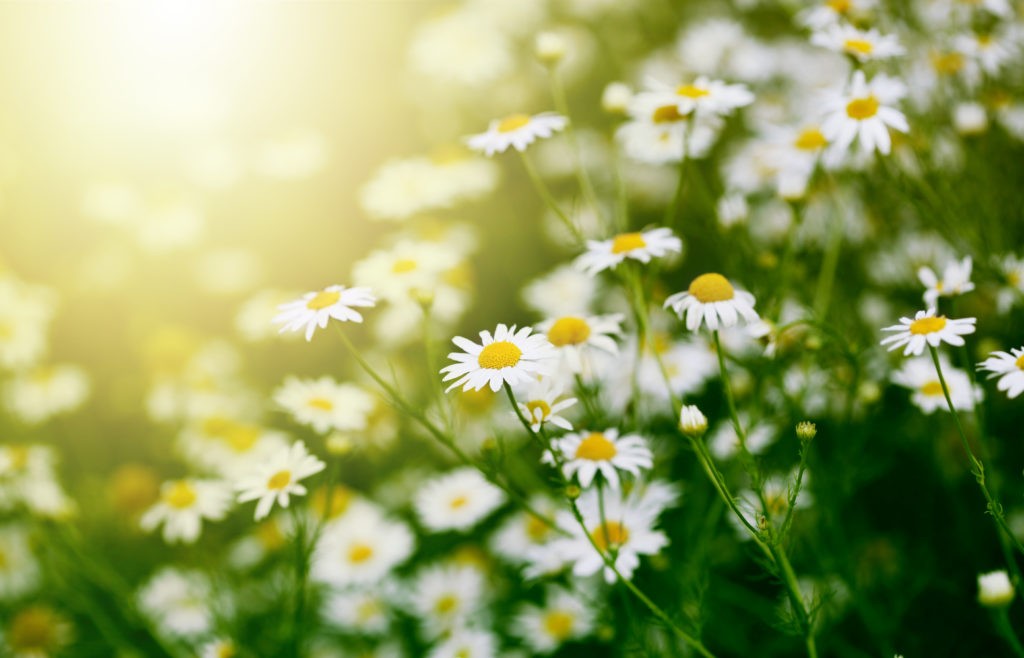
Lately, when I read articles about holistic healing or herbalism in general, I notice a new rising star that is captivating the public eye.
It’s easy to get caught up in the ‘complex’ herbs like adaptogens or antioxidants — the never-ending tale of discovery makes learning about all of earth’s healing herbs so rewarding for the mind and body alike. But recently, I’ve been challenging myself to go back to the basics.
What is the first herb you ever learned was actually medicine?
For me, it was chamomile. When I was little, this bittersweet herb was given to me as a bedtime tea when I was exhausted or had a stomach ache. I didn’t think about it much as a kid. I just trusted the magic in the cup and accepted its healing with that child-like faith.
But as I began to study this common flower, I learned just how powerful chamomile is.
The first use of chamomile goes all the way back to ancient Egypt. And they used it in the same ways we do today: teas, oils, and baths! Chamomile’s relaxing abilities were also recognized by the wanderers of modern day Germany and all throughout the markets of ancient Rome. And guess what— they also used chamomile in the exact same ways.
So how could they all know that chamomile was a calming remedy? Their cultural lifestyles, spiritual practices, culinary processes and languages were all so different yet this healing plant spoke to them in the same way—crazy right?
Well, the answer seems simple enough to me… if chamomile was so widely known and used, then it must actually have strong healing constituents. It can’t be just “folk medicine,” or tradition… If these very different ancient groups came to the same conclusions about this little white flower, it has to be what we call “evidence-based” medicine.
Thousands of years of practice and experience with chamomile back up these ancient claims, but modern science has taken it one step further. Researchers and healers have been studying chamomile and it’s no surprise to me that this ancient wisdom is being proven out in modern laboratories. Our ancestors knew a thing or two…
So what have scientists discovered about chamomile so far?
Chamomile is a potent medicine.
When you break chamomile down into its chemical constituents, the two most notable attributes are the volatile oils and flavonoids. The volatile oils are responsible for chamomile’s sleep-time reputation— they relax muscles and calm the mind. While the flavonoids (specifically apigen) has been proven time and time again to bring down anxious and depressive tendencies.
In addition to that, studies have shown that chamomile is one heck of a pain killer. Not only does it work topically to relieve aches and pains, bring down inflammation, stop muscle spasms and heal wounds— you can take it internally as a tea, tincture or syrup and get the same results.
And here’s the real kicker— chamomile is incredibly safe. (So safe in fact that it is traditionally used for teething or fussy children.)
It’s no wonder this herb is a total ‘go-to’ remedy for people across the world, young and old alike.
You can take chamomile every day for the rest of your life with no side effects — and many of my friends do! You’d just get the added bonus of deeper sleep, a strengthened immune system, and a balanced stress response.
A tasty tip: my favorite way to drink chamomile in the summer time is to make a big jar of tea using heated spring water and a big handful of the dried flowers. Once it steeps, I then put it in the fridge overnight to cool off. Chamomile Iced Tea with a little bit of honey is a heavenly beverage on a hot day!
If you haven’t already added this special herb to your herbal repertoire, make sure to give it a try. After thousands of years, this healing plant continues to be a household name and science can now back it’s safety.
Stay curious,
Nick Polizzi
Host of Remedy: Ancient Medicine for Modern Illness
& Founder of The Sacred Science
The post This Calming Flower United Ancient Cultures appeared first on The Sacred Science.

No comments:
Post a Comment